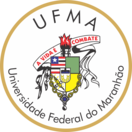| Compartilhamento |


|
Use este identificador para citar ou linkar para este item:
https://tedebc.ufma.br/jspui/handle/tede/5903Registro completo de metadados
| Campo DC | Valor | Idioma |
|---|---|---|
| dc.creator | RODRIGUES, Marcos Van Basten | - |
| dc.creator.Lattes | https://lattes.cnpq.br/6411928515164267 | por |
| dc.contributor.advisor1 | COUCEIRO, Luiz Alberto Alves | - |
| dc.contributor.advisor1Lattes | http://lattes.cnpq.br/6882715941373103 | por |
| dc.contributor.referee1 | COUCEIRO, Luiz Alberto Alves | - |
| dc.contributor.referee1Lattes | http://lattes.cnpq.br/6882715941373103 | por |
| dc.contributor.referee2 | DORNELLES, Soraia Sales | - |
| dc.contributor.referee2Lattes | http://lattes.cnpq.br/8639481537384795 | por |
| dc.contributor.referee3 | MACHADO, Maria Helena Pereira Toledo | - |
| dc.contributor.referee3Lattes | http://lattes.cnpq.br/2466501217380597 | por |
| dc.date.accessioned | 2025-02-12T13:37:48Z | - |
| dc.date.issued | 2024-02-29 | - |
| dc.identifier.citation | RODRIGUES, Marcos Van Basten.O destino trágico da rainha preta: Pajelanças, realismo-mágico e missão civilizatória na cidade de São Luís-MA em fins do século XIX. 2024. 302 f. Dissertação( Programa de Pós-graduação em História/CCH) - Universidade Federal do Maranhão, São Luís, 2024. | por |
| dc.identifier.uri | https://tedebc.ufma.br/jspui/handle/tede/5903 | - |
| dc.description.resumo | Em São Luís do Maranhão, nas últimas décadas do século XIX, mulheres pretas podiam ser rainhas; de corpos humanos, bichos vivos eram extraídos; em qualquer esquina, uma bruxa ou um feiticeiro; plantas curavam; às águas, deusas-mães; e até as pedras viviam. Narrativas como essas eram comuns naquele momento, atraindo a atenção de um grande público – inclusive da parcela mais cética – quando veiculadas pelos jornais. De semelhanças, entre elas, a alcunha pajelança, a população negra envolvida, suas relações com um ofício muito demandado, o antagonismo do projeto civilizatório em vigor, e um certo fascínio que já despertavam. Por quais razões alguém saía de sua casa, atravessava a cidade em direção às tipografias e redações dos periódicos, para pagar por uma publicação na qual inventava e reclamava sobre essas práticas mágicas, fictícias ou não? É o que esta pesquisa investiga. Em outras palavras: perscrutam-se os dramas sociais decorrentes das pajelanças naquela cidade em fins oitocentistas, especificamente aqueles vislumbráveis pela imprensa – vinculada a documentos de polícia, autos judiciais, normas vigentes, memórias, literaturas e produções científicas para se compor o corpo documental. Com vistas à investigação do referido objeto, o problema basilar questiona os conflitos entre a São Luís real e a pretendida provocados pelas existências persistentes de pajés em seu perímetro e circunvizinhanças. Paralelo ao que já foi escrito a respeito, acerca do campo religioso maranhense gestado pelas intersecções entre culturas indígenas, africanas e europeias, e de sua coerção em tempos de pretensa república, aqui esse fenômeno mágico – mas nem por isso menos real – é percebido a partir da dinâmica à que pertencia naquela sociedade em fim de século; no pós-abolição do sistema escravista. Mais do que um amálgama de práticas terapêuticas e religiosas, que tinha contra si um Estado escravista em reformulação, pajelanças eram comunidades, ou redes de solidariedade, formadas por indivíduos aos quais a realidade era demasiadamente hostil, insustentável; cujo sistema de crença integrava, também, quem as detratava, ao retirá-las da obscuridade, da vida privada, conferindo-lhe relevância, reconhecendo socialmente seus poderes. | por |
| dc.description.abstract | In São Luís do Maranhão, in the last decades of the 19th century, black women could be queens; live animals were extracted from human bodies; a witch or a sorcerer could be found on every street corner; plants could heal; water could be treated as mother goddesses; and even stones could live. Stories like these were common at the time, attracting the attention of a large audience – including the most skeptical – when they were published in newspapers. Among the similarities were the nickname pajelança, the black population involved, their relationships with a highly sought-after profession, the antagonism of the civilizing project in force, and a certain fascination that they already aroused. For what reasons would someone leave their home, cross the city to the printing presses and editorial offices of newspapers, to pay for a publication in which they invented and complained about these magical practices, fictitious or not? This is what this research investigates. In other words: the social dramas resulting from the pajelanças in that city at the end of the nineteenth century are examined, specifically those glimpsed by the press – linked to police documents, court records, current regulations, memoirs, literature and scientific productions. To investigate the aforementioned object, the basic problem questions the conflicts between the real and the intended São Luís caused by the persistent existence of pajés in its perimeter and surrounding areas. Parallel to what has already been written about the religious field of Maranhão created by the intersections between indigenous, african and european cultures, and its coercion in times of a supposed republic, here this magical phenomenon – but no less real for that – is perceived from the dynamics to which it belonged in that society at the end of the century; in the post-abolition of the slavery system. More than an amalgam of therapeutic and religious practices, which had against them a slave state in reformulation, pajelanças were communities, or solidarity networks, formed by individuals for whom reality was too hostile, unsustainable; whose belief system also integrated those who detracted from them, by removing them from obscurity, from private life, giving them relevance, socially recognizing their powers. | eng |
| dc.description.provenance | Submitted by Maria Aparecida (cidazen@gmail.com) on 2025-02-12T13:37:48Z No. of bitstreams: 1 MARCOS VAN BASTEN RODRIGUES.pdf: 5249583 bytes, checksum: 53b3b6dde04c5cfc2efa5a1b8365fe9e (MD5) | eng |
| dc.description.provenance | Made available in DSpace on 2025-02-12T13:37:48Z (GMT). No. of bitstreams: 1 MARCOS VAN BASTEN RODRIGUES.pdf: 5249583 bytes, checksum: 53b3b6dde04c5cfc2efa5a1b8365fe9e (MD5) Previous issue date: 2024-02-29 | eng |
| dc.format | application/pdf | * |
| dc.language | por | por |
| dc.publisher | Universidade Federal do Maranhão | por |
| dc.publisher.department | DEPARTAMENTO DE HISTÓRIA/CCH | por |
| dc.publisher.country | Brasil | por |
| dc.publisher.initials | UFMA | por |
| dc.publisher.program | PROGRAMA DE PÓS-GRADUAÇÃO EM HISTÓRIA/CCH | por |
| dc.rights | Acesso Aberto | por |
| dc.subject | Acusações de feitiçaria; | por |
| dc.subject | História Social da cidade; | por |
| dc.subject | Sociologia da pajelança | por |
| dc.subject | Witchcraft accusations; | eng |
| dc.subject | Social History of the city; | eng |
| dc.subject | Sociology of pajelança | eng |
| dc.subject.cnpq | História Regional do Brasil | por |
| dc.title | O DESTINO TRÁGICO DA RAINHA PRETA: Pajelanças, realismo-mágico e missão civilizatória na cidade de São Luís-MA em fins do século XIX | por |
| dc.title.alternative | THE TRAGIC FATE OF THE BLACK QUEEN: Shamanism, magical realism and mission civilization in the city of São Luís-MA at the end of the 19th century | eng |
| dc.type | Dissertação | por |
| Aparece nas coleções: | DISSERTAÇÃO DE MESTRADO - PROGRAMA DE PÓS-GRADUAÇÃO EM HISTÓRIA | |
Arquivos associados a este item:
| Arquivo | Descrição | Tamanho | Formato | |
|---|---|---|---|---|
| MARCOS VAN BASTEN RODRIGUES.pdf | Dissertação de Mestrado | 5,13 MB | Adobe PDF | Baixar/Abrir Pré-Visualizar |
Os itens no repositório estão protegidos por copyright, com todos os direitos reservados, salvo quando é indicado o contrário.




